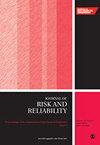A novel low-cost bearing fault diagnosis method based on convolutional neural network with full stage optimization in strong noise environment
IF 1.8
4区 工程技术
Q3 ENGINEERING, INDUSTRIAL
Proceedings of the Institution of Mechanical Engineers Part O-Journal of Risk and Reliability
Pub Date : 2024-07-26
DOI:10.1177/1748006x241264446
引用次数: 0
Abstract
In recent years, convolutional neural network (CNN) has been successfully applied in the field of bearing fault diagnosis. So as to improve the diagnosis performance in harsh environment with strong noise, the structure of CNN-based feature extractor becomes deeper and more complex. However, with the increase of depth, the model may lose shallow features and the training parameters will surge. Moreover, if the sample size is not large, it tends to over fit. It deviates from the concept of network lightweight. On the other hand, little attention will be paid to the optimization of model classifiers which can significantly improve the classification performance. Therefore, we proposed a CNN with full stage optimization (FSOCNN) model for bearing fault diagnosis in strong noise environment. In the feature extraction stage, the model is optimized with a novel multi-feature output structure connected with global average pooling to improve the feature extraction ability without any extra trainable parameters. In the classification stage, the traditional softmax layer will only participate in the parameter optimization of CNN model through gradient descent algorithm, and the diagnosis results will be output by support vector machine. The effectiveness of the proposed method is verified on the two bearing datasets under different levels of noise. Compared with the existing five fault diagnosis models, the results prove that the proposed method possesses higher accuracy, less computing time, and better stability.基于卷积神经网络的新型低成本轴承故障诊断方法与强噪声环境下的全阶段优化
近年来,卷积神经网络(CNN)已成功应用于轴承故障诊断领域。为了提高在强噪声的恶劣环境下的诊断性能,基于卷积神经网络的特征提取器的结构变得越来越深、越来越复杂。然而,随着深度的增加,模型可能会丢失浅层特征,训练参数也会激增。此外,如果样本量不大,还容易出现过度拟合。这偏离了网络轻量级的概念。另一方面,人们很少关注模型分类器的优化,而优化模型分类器可以显著提高分类性能。因此,我们提出了一种全阶段优化的 CNN(FSOCNN)模型,用于强噪声环境下的轴承故障诊断。在特征提取阶段,该模型采用新颖的多特征输出结构与全局平均池相连接进行优化,以提高特征提取能力,而无需任何额外的可训练参数。在分类阶段,传统的 softmax 层仅通过梯度下降算法参与 CNN 模型的参数优化,并通过支持向量机输出诊断结果。在不同噪声水平下的两个轴承数据集上验证了所提方法的有效性。与现有的五种故障诊断模型相比,结果证明所提出的方法具有更高的准确性、更少的计算时间和更好的稳定性。
本文章由计算机程序翻译,如有差异,请以英文原文为准。
求助全文
约1分钟内获得全文
求助全文
来源期刊

Proceedings of the Institution of Mechanical Engineers Part O-Journal of Risk and Reliability
ENGINEERING, MULTIDISCIPLINARY-ENGINEERING, INDUSTRIAL
CiteScore
4.50
自引率
19.00%
发文量
81
审稿时长
6-12 weeks
期刊介绍:
The Journal of Risk and Reliability is for researchers and practitioners who are involved in the field of risk analysis and reliability engineering. The remit of the Journal covers concepts, theories, principles, approaches, methods and models for the proper understanding, assessment, characterisation and management of the risk and reliability of engineering systems. The journal welcomes papers which are based on mathematical and probabilistic analysis, simulation and/or optimisation, as well as works highlighting conceptual and managerial issues. Papers that provide perspectives on current practices and methods, and how to improve these, are also welcome
 求助内容:
求助内容: 应助结果提醒方式:
应助结果提醒方式:


